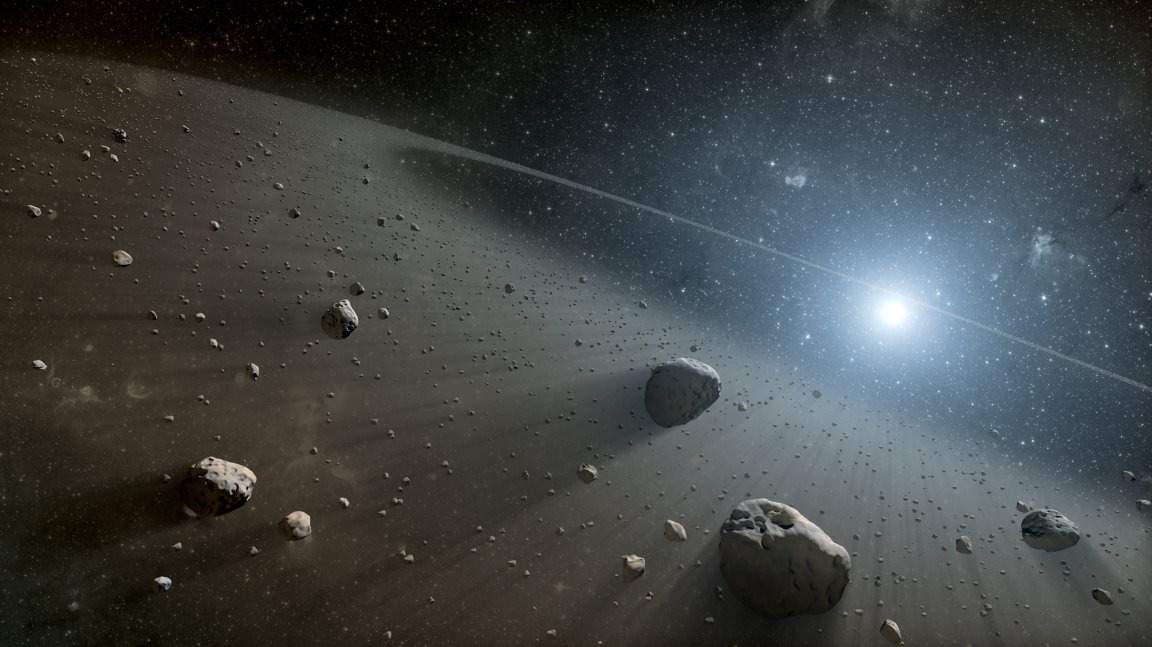
Asterdestroyed?
A future in which an asteroid crashes into Earth and destroys the planet — or all life on it, in the case of the dinosaurs — is prevalent in popular culture: Bruce Willis sacrificed himself to stop in happening in Armageddon, aliens have arrived on one in Day of the Triffids, and there have been a multitude of apocalyptic predictions on the news over the last few years. So, what is the precise nature of asteroids, and how likely are they wipe us from the face of the planet?
Asteroids are rocky bodies orbiting the Sun, which differ from comets in that they are composed of metal and rock rather ice, dust, and rock. They were formed 4.5 billion years ago, but don’t have sufficient gravity to round out like planets or have atmospheres.
Several asteroids have played pivotal roles in the world’s formation and cosmic history. An asteroid the size of Mars, which has been retrospectively named Theia, hit the Earth and was partially absorbed: some debris from the impact, though, was conglomerated by gravity to form the Moon. The most famous asteroid, though, is Chicxulub — the asteroid that wiped out the dinosaurs by causing sufficient sulphur displacement to block out the Sun.
Small asteroids hit Earth frequently, but rarely have any effect — the most violent example in recent memory was the 17- to 20-meter diameter Chelyabinsk meteor which hit Russia in February 2013, smashing windows and injuring 1,400 people in the process. Asteroids with a one-kilometer diameter hit Earth every 500,000 years or so; with the last known example of one with a 10-kilometer diameter occurring 66 million years ago. The chances of an asteroid apocalypse, then, are minimal.

Peter Brown, professor of physics and astronomy at Western University in London, Ontario, said in an interview with CBC News:
There certainly is a risk from asteroid impacts; it’s the only natural risk that we as a species have the ability to predict well in advance and mitigate against, entirely, […] But I want people to keep it in context. You shouldn’t be losing sleep over it.
Our Plan to Avoid Destruction
Despite the chances of an asteroid apocalypse being fortunately slim, our planet has measures in place to protect against smaller near Earth objects (NEOs) like the Chelyabinsk meteor.
The main agency responsible for tracking and putting contingency measures in place is NASA’s Center for Near Earth Object Studies, which has a database sophisticated enough for us “to know within the next couple of decades for sure if any time over the next century if there’s an asteroid that’s going to hit,” Brown said in the interview. The organization, according to its 2016 report, is also developing “Methods for NEO Deflection and Disruption.”

NASA has already launched a progenitor for how a gravity-based asteroid diversion could work in the form of its Dawn Aircraft, which is currently orbiting the space rock Vesta. A future version of Dawn could exert a subtle gravitational pull on a space object, which would allow it to change the trajectory of rocks with remarkable subtlety and specificity. Rusty Schweickart, chairman of the B612 Foundation, who’s mission is to protect the world from asteroid attacks, said in an interview with Space.com, “you can get a very precise change in the orbit for the final part of the deflection using a technology of this kind.”
At the more futurist end of our planetary defense arsenal is the idea of “Mirror Bees.” Hypothetically, we could send a swarm of robotic spacecraft bearing mirrors to an asteroid, which would then focus the solar energy on one spot: Bill Nye, executive director of the Planetary Society, said to Space.com that “The reaction of that gas or material being ejected from the asteroid would nudge it off-course.”

While the threat of a dinosaur-level disaster is extremely slim, even small asteroids can still cause huge amounts of damage, destruction, and pain. It’s comforting that individuals and organizations are working towards developing methods to minimize the disruption asteroids — big or small — can cause.